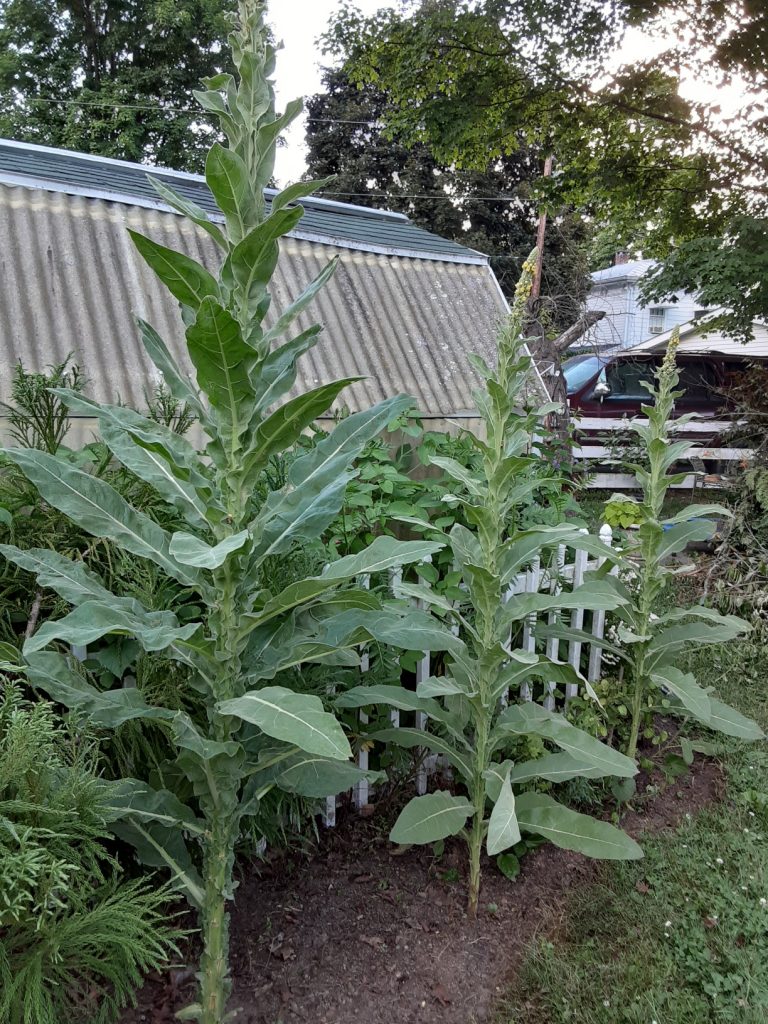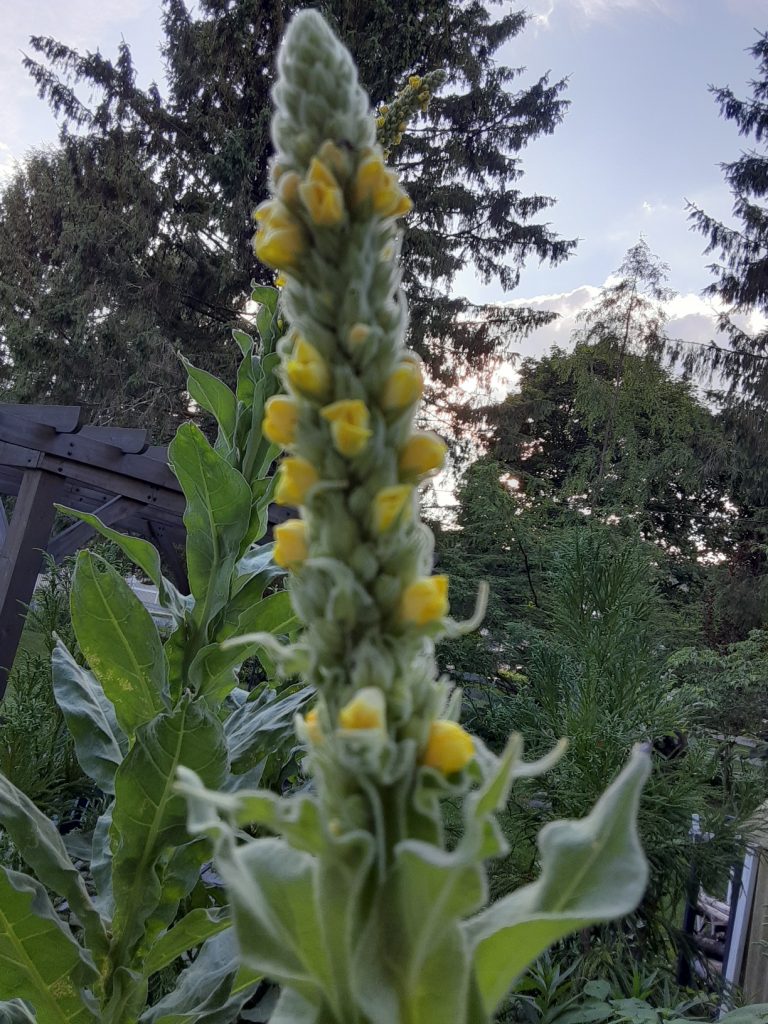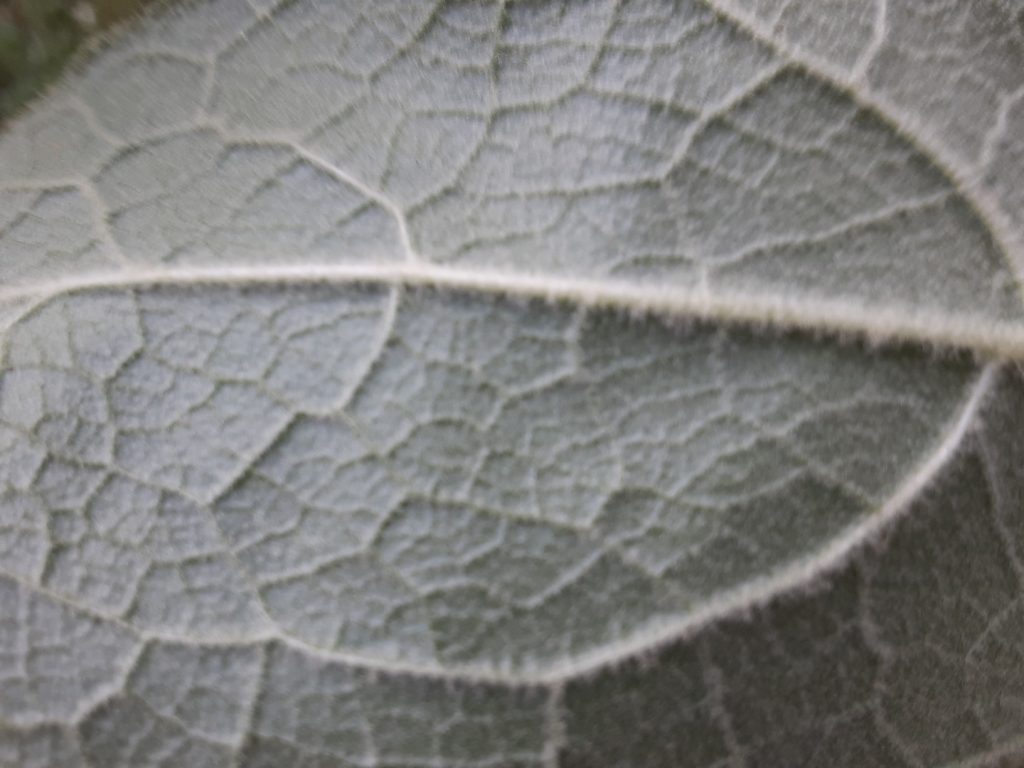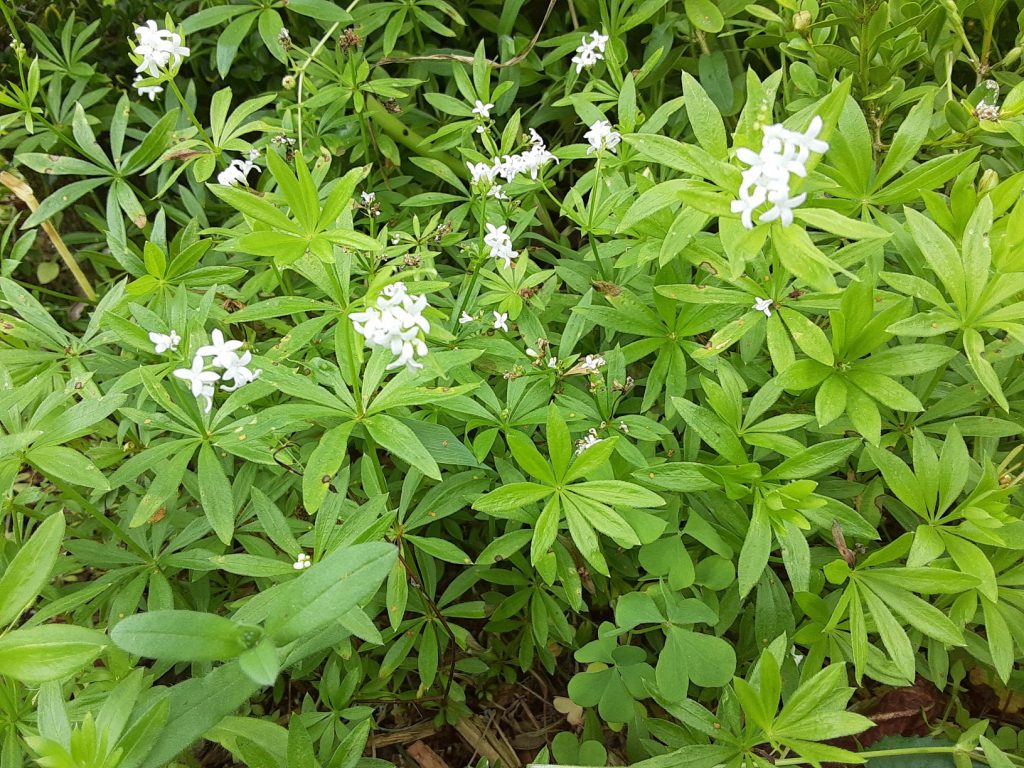By: Susan Sprout
Find out what’s underfoot with NPC member and environmental educator, Susan Sprout! Catch up on past issues of Underfoot: Introduction & Bloodroot, Trout Lily & Coltsfoot, Blue Cohosh & Dutchman’s Breeches, Ground Ivy & Forget-Me-Nots, Goldthread & Wild Ginger.
Common Mullein
Common mullein is a member of the snapdragon family and native to Europe, Asia, and northern Africa. It is a biennial plant that starts its first year of life underfoot as a rosette of very downy leaves. Another common name for it is flannel plant.
In the second year of its life, it puts up a flower spike of amazing proportions, reaching heights of eight feet or more. You may have seen them growing along the highway. They do stand out. You really cannot misidentify this plant. I wanted to write about mullein because it is such an interesting plant that I brought home seeds for in my gardens. Wow! Are they prolific!

And with so many uses: dried stalks for tapers or torches, flowers in oil for earaches, leaves rubbed on cheeks for rouge or made into medicinal teas or smoking mixtures or poultices. If your feet get sore hiking, the leaves even make soothing insoles for shoes!

Common mullein blossoms 
Common mullein down leaf
Sweet woodruff
Sweet woodruff is a low-growing surprise package! In its shady, woodland niche, this almost insignificant, perennial ground cover may grab your attention in May or June with its small four-pointed white flowers like stars against a green sky. Its leaves whorl around its square stem in groups of six to ten. Although the leaves look shiny and smooth, if you have a magnifier with you on your walk, you can detect very tiny prickly hairs on them.

Woodruff is a member of the Gallium genus along with cleavers and bedstraws that have much bigger and pricklier demeanors. Gently pull off a sprig, hold it in your warm hand, and then sniff the wonderfully unexpected aroma of new-mown hay. Placed somewhere to dry, its scent will increase. I like to put it on the dashboard of my vehicle. The chemical compound responsible is coumarin. Sweet woodruff has been used for perfumery, stuffing mattresses, and more importantly, for flavoring May wine!
Susan Sprout is a retired school teacher who continued teaching after retirement at Montour Preserve helping teachers of handicapped students with nature walks, at the National Shell Museum as a curator of the fossil collection, and as teacher of Shell Studies at the local school on Sanibel Island. Based on her love and study of plants, she does living history presentations of medicinal plants used by Native Americans, colonial immigrants, and people living during the Civil War. Both she and her husband, Richard, serve as cannoneers with Thompson’s Independent Battery C PA Light Artillery. Sue has served on the Northcentral Pennsylvania Conservancy board in the past. The Sprouts have been Conservancy members for 29 years.

